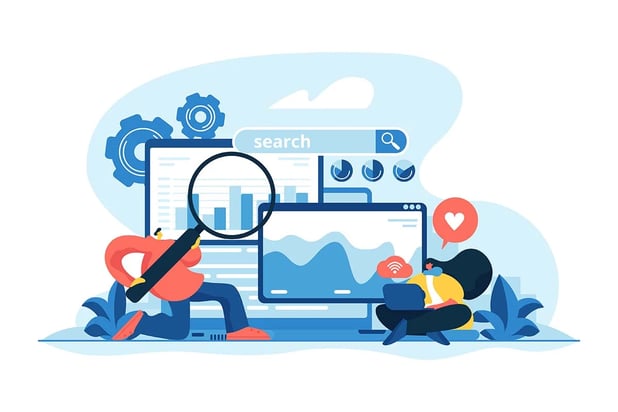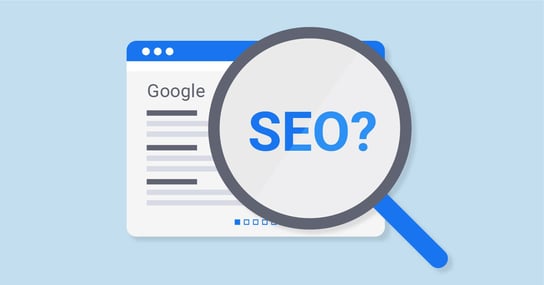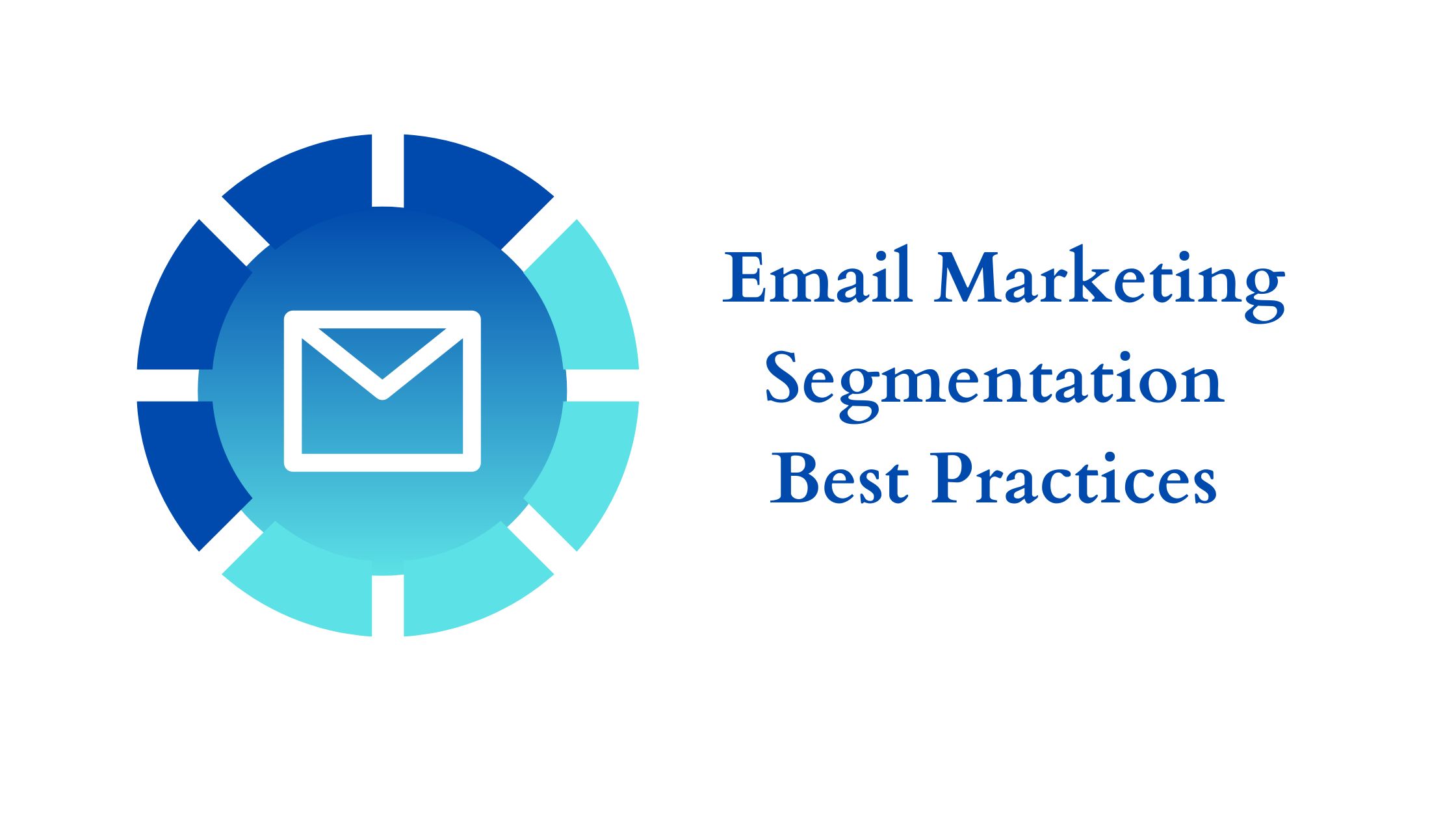E-Commerce Inbound Marketing: Everything You Need To Know
Marketers started to notice how customers get annoyed with the constant cold calls of businesses encouraging them to purchase a product. While some businesses use such a marketing tactic, it is generally starting to recede. Nowadays, the winning tactic is having customers look out for your products.
As an e-commerce business, there is nothing better than customers contacting and reaching you. This is widely known as inbound e-commerce marketing.
However, it should be known that customers won’t visit your online store out of the blue. Some tactics and strategies can attract buyers to your store rather than reach them.
Keep reading the upcoming paragraphs to understand inbound marketing for e-commerce, its stages, why to use it, and the top inbound marketing channels.
Table Of Content:
- What is e-commerce inbound marketing?
- Stages of the inbound marketing
- Why use inbound marketing for e-commerce?
- Top inbound marketing channels
What Is E-commerce Inbound Marketing?

Think about how customers decide to purchase a product. First, customers encounter a problem that specifies a need to solve. Second, they start looking for options and then purchase a product or service.
We are sure you are aware of this process, but we aim to tell you: this is inbound marketing.
E-commerce inbound marketing is an ongoing process that attracts customers to your online store by delivering valuable content and personalized customer experience.
Therefore, inbound marketing is about bringing your customers rather than reaching out to them. Hence, several ways can attract your customers.
For example, creating booming content can get your customers to visit your online store. In addition, offering your buyers personalized experiences will make them satisfied and more willing to visit your online store.
Think about delivering the right content at the right place and time. Trust us, inbound marketing for e-commerce is a winning marketing tactic you don’t want to miss out on.
Stages Of The Inbound Marketing
There are multiple steps your e-commerce needs to be aware of to conduct successful inbound marketing. The following paragraphs will take you through the different stages of inbound marketing.
1- Attract
As mentioned previously, inbound marketing for e-commerce is all about bringing customers to your business. Hence, unsurprisingly, the first stage is to attract.
As an e-commerce store, you must attract customers to your website or social media platforms. By attracting customers, you raise brand awareness and, most importantly, transfer strangers to potential customers.
Most importantly, you have to attract the right target audience. Your e-commerce would benefit nothing if you attracted customers who are not interested in your products or services.
Hence, you should never forget to identify your target audience before attracting them. In fact, you can identify a buyer persona and consider it a guide for the customers you aim to attract
You might wonder by now, how can I attract customers?
The answer is simple: attract customers by offering them valuable and relevant content, tackling their problems, and answering their questions.
2- Convert
Congratulations, you just attracted hundreds of customers to your website or social media. However, they all left without providing information or even buying your products.
This is a scenario that e-commerce stores don’t want to encounter. Even though attracting customers is an essential aspect of inbound e-commerce marketing, plenty of other steps should be taken to affect your e-commerce business positively.
The customers that you have attracted should convert to become qualified leads. Such conversion can be done by creating a solid relationship with your potential customers, known as lead nurturing.
But, lead nurturing won’t be done unless you have information on your customer; this includes their phone number, email address, or any other contact details.
When you have such contact details, you successfully gathered an inbound lead. At this point, we can tell you congratulations!
An extra tip to quickly gather customers’ contact details incentivizes them to share their emails or phone numbers. Such an incentive might be an offer, discount, or free shipping.
3- Close
As an e-commerce business, your benefit lies in increasing sales. So, sales are generated by encouraging the leads to purchase. Hence, you are converting leads into customers.
This is precisely what needs to be done at this stage; converting leads to customers.
At this point, your customers are close to making their purchase decision. But, a little push from your business won’t harm.
For example, you can create content on why they should purchase your products and not that of the competitors. In addition, email marketing is beneficial in such a stage to familiarize your potential customers with everything new in your e-commerce store.
We encourage you to check out Convertedin, a marketing automation tool that effectively handles email marketing effortlessly for your e-commerce.
4- Delight
Your relationship with your customers doesn’t end at the time when they purchase. The success of your e-commerce business emerges from creating a lifetime connection with your customers. Accordingly, you are building a solid base of loyal customers who will likely continue purchasing your products.
Studies showed that acquiring new customers is 6 to 7 times more expensive than retaining existing ones ( Hubspot,2022). So, you have to exert extra effort to maintain your current customers.
You must delight your customers to maintain them at this stage of your inbound e-commerce marketing. It’s that simple.
So, to delight your customers, you have to continuously offer them the same premium service you used to offer before purchase. In addition, you need to be in touch with your customers. Send them personalized offers, keep in touch on social media, and share your new products and services with them.
If this stage is done right, you do not only have customers but loyal promoters for your e-commerce brand.
Why Use Inbound Marketing For E-commerce?
The advantages of using inbound marketing for e-commerce are vast. So, we will guide you through the benefits of using inbound marketing for e-commerce.
-
Increase Website Visitors
One of the first reasons you should use e-Commerce inbound marketing is to increase website traffic and visitors. Simply, by using inbound marketing, you attract people rather than reach out to them. Therefore, you can attract more visitors to your websites and social media platforms.
As a result, you are increasing the visibility of your e-commerce and raising brand awareness. Additionally, you are attracting customers who are interested in your products as well. So, it is undoubtedly beneficial for your e-commerce.
-
Increases your credibility
We constantly like to put ourselves in the customers’ shoes. So, when customers receive continuous outbound calls or emails from businesses, this reduces the credibility of such a business in customers' eyes.
The same is applied to your e-commerce store. If you constantly call your customers, they will start thinking that you are desperate for customers due to your third-rate products.
Therefore, creating valuable and personalized content for your customers and attracting them to your store will increase your credibility. In addition, adding feedback and reviews of your products will accelerate such credibility.
-
Reduces Cost
Studies show that businesses relying on inbound marketing save 31% of marketing costs compared to paid search (x93,2019).
By using E-commerce inbound marketing, you are not just creating content that attracts everyone. You are focused and directed toward creating content that attracts your target audience only.
As a result, you are directing your marketing efforts to the right place and the right audience.
Additionally, the cost of creating an inbound marketing strategy for your e-commerce is relatively less when compared to creating a billboard, advertisements, or paid ads.
-
Saves Times
The idea of mass marketing and targeting everyone is outdated. By using inbound e-commerce marketing, you are directing your efforts primarily toward your target audience.
Even though reaching effective results from inbound marketing might take some time, the time devoted from your side is less. Your content is focused and directed toward a specific target audience.
In addition, with the constant automation trends in e-commerce, your inbound marketing efforts can be automated and still achieve astonishing results.
Therefore, you are saving time that can be used to work on other strategic tasks. This eventually leads to saving money.
A widely known business quote says:” Time is money.” And we can’t agree more on such a quote.
Top Inbound Marketing Channels
With the massive importance of inbound e-commerce marketing, you must focus on the top inbound marketing channels.
1- Blogs
The first channel you can rely upon in your E-commerce inbound marketing is blogs. As mentioned earlier, inbound marketing involves sharing valuable content. Hence, blogs can be the right choice to get this job done.
Throughout blogs, your e-commerce shares informative content with your customers. Thus, you give an impression of how experienced and versed you are. Accordingly, this enhances trust and credibility in your e-commerce store.
Additionally, customers usually do some research before purchasing. Therefore, your presence at such a stage through informative blogs will positively attract customers to your e-commerce business.
2- SEO

Search Engine Optimization (SEO) involves enhancing your content to be more visible and ranked higher on search engine result pages (SERP)
To be ranked higher on SERPs, search for the relevant keywords your customers use and add them to your content.
For example, customers shopping online for makeup constantly use keywords like makeup revolution or makeup brushes. Therefore, you need to include such keywords in your upcoming content. Hence, you will attract these customers to your online store.
The vitality of SEO lies in its ability to attract organic reach and the right target customer.
3- Social Media Platforms
Currently, the number of social media users is constantly on the rise. Therefore, social media platforms must be addressed as inbound marketing channels.
Since all e-commerce businesses also focus on social media platforms, you must stand out in such fierce competition. Accordingly, to create a successful e-commerce inbound marketing, you must choose the suitable channel your customers spend the most time using.
In addition, you have to create unique content consistent with your brand image. Such content must also be valuable and compatible with the type of content your customers like to see. Use viral hashtags in your posts to create more traffic. Remember that consistency in posting content is essential.
Creativity in such a channel will produce desirable results for your inbound e-commerce marketing.
4- Website And Its Landing Page
The first thing your customers go through when visiting your website is your landing page. Therefore, you must optimize your landing page for a better customer experience.
Your landing page is the point where generating leads will be determined. Thus, your landing page has to be direct and to the point. In addition, you should include your offers and deals to encourage visitors to share their contact information.
However, to maintain a good impression to your customers, you need to go beyond just optimizing your landing page and website.
Your e-commerce website needs to be user-friendly. In addition, it should answer all of your customers’ questions and inquiries. Adding a chatbot will also be beneficial.
5- Email Marketing
You might wonder how email marketing is an inbound marketing channel. Well, it all depends on the timing of your email marketing.
When customers get attracted to your content, visit your website, and share their contact information, they are interested in your e-commerce and engaging with it.
By using email marketing at this point, you are using inbound marketing. That’s because you are contacting already interested customers. So, they are now regarded as leads.
They were attracted to your e-commerce through other channels and are willing to know more. Unlike outbound email marketing, businesses constantly share messages with customers who are most likely uninterested.
Email marketing as an inbound marketing channel might be tricky. Hence, you must focus on delivering the correct type of content to your generated leads. Accordingly, you will ensure being on top of your leads’ minds when they decide to purchase.
Final Thoughts:
You are now ready to start working on your e-commerce inbound marketing. However, you must choose a suitable channel for your e-commerce to achieve desirable results. Also, you need to segment the market to identify your target audience before going through inbound marketing.
Because we know the hassle of segmentation, we encourage you to visit Convertedin. You will no longer need to filter and analyze customer segments independently; with Convertedin's automated segmentation engine, we'll achieve your audience targeting.
Book your demo now!
 By
By

